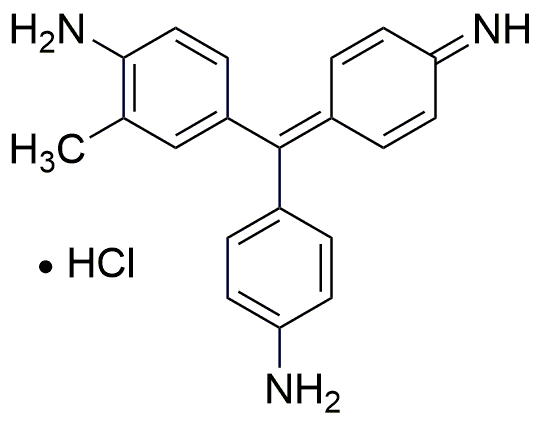Fuchsine basic is widely utilized in research focused on:
- Histology Staining: Commonly used as a dye in histological studies to stain biological tissues, enhancing visualization of cellular structures under a microscope.
- Textile Industry: Employed as a colorant in the textile sector, providing vibrant colors for fabrics and ensuring long-lasting dye properties.
- Biological Research: Acts as a vital reagent in microbiology for staining bacteria, aiding in the identification and differentiation of microbial species.
- Pharmaceutical Applications: Utilized in the development of certain pharmaceutical formulations, contributing to the coloration and stability of products.
- Environmental Testing: Applied in analytical chemistry for detecting and quantifying specific compounds in environmental samples, such as water quality assessments.
General Information
Properties
Safety and Regulations
Applications
Fuchsine basic is widely utilized in research focused on:
- Histology Staining: Commonly used as a dye in histological studies to stain biological tissues, enhancing visualization of cellular structures under a microscope.
- Textile Industry: Employed as a colorant in the textile sector, providing vibrant colors for fabrics and ensuring long-lasting dye properties.
- Biological Research: Acts as a vital reagent in microbiology for staining bacteria, aiding in the identification and differentiation of microbial species.
- Pharmaceutical Applications: Utilized in the development of certain pharmaceutical formulations, contributing to the coloration and stability of products.
- Environmental Testing: Applied in analytical chemistry for detecting and quantifying specific compounds in environmental samples, such as water quality assessments.
Documents
Safety Data Sheets (SDS)
The SDS provides comprehensive safety information on handling, storage, and disposal of the product.
Product Specification (PS)
The PS provides a comprehensive breakdown of the product’s properties, including chemical composition, physical state, purity, and storage requirements. It also details acceptable quality ranges and the product's intended applications.
Certificates of Analysis (COA)
Search for Certificates of Analysis (COA) by entering the products Lot Number. Lot and Batch Numbers can be found on a product’s label following the words ‘Lot’ or ‘Batch’.
*Catalog Number
*Lot Number
Certificates Of Origin (COO)
This COO confirms the country where the product was manufactured, and also details the materials and components used in it and whether it is derived from natural, synthetic, or other specific sources. This certificate may be required for customs, trade, and regulatory compliance.
*Catalog Number
*Lot Number
Safety Data Sheets (SDS)
The SDS provides comprehensive safety information on handling, storage, and disposal of the product.
DownloadProduct Specification (PS)
The PS provides a comprehensive breakdown of the product’s properties, including chemical composition, physical state, purity, and storage requirements. It also details acceptable quality ranges and the product's intended applications.
DownloadCertificates of Analysis (COA)
Search for Certificates of Analysis (COA) by entering the products Lot Number. Lot and Batch Numbers can be found on a product’s label following the words ‘Lot’ or ‘Batch’.
*Catalog Number
*Lot Number
Certificates Of Origin (COO)
This COO confirms the country where the product was manufactured, and also details the materials and components used in it and whether it is derived from natural, synthetic, or other specific sources. This certificate may be required for customs, trade, and regulatory compliance.


